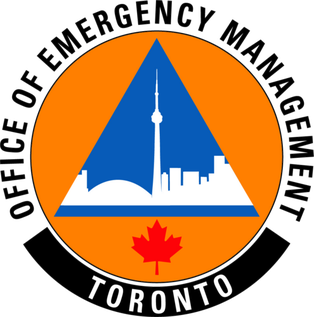Section 33 of the Canadian Charter of Rights and Freedoms is part of the Constitution of Canada. It is commonly known as the notwithstanding clause, sometimes referred to as the override power, and it allows Parliament or provincial legislatures to temporarily override sections 2 and 7–15 of the Charter.

A state of emergency is a situation in which a government is empowered to be able to put through policies that it would normally not be permitted to do, for the safety and protection of its citizens. A government can declare such a state during a natural disaster, civil unrest, armed conflict, medical pandemic or epidemic or other biosecurity risk. Justitium is its equivalent in Roman law—a concept in which the Roman Senate could put forward a final decree that was not subject to dispute yet helped save lives in times of strife.

The Emergencies Act is a statute passed by the Parliament of Canada in 1988 which authorizes the Government of Canada to take extraordinary temporary measures to respond to public welfare emergencies, public order emergencies, international emergencies and war emergencies. The law replaces the War Measures Act passed in 1914. It asserts that any government action continues to be subject to the Canadian Charter of Rights and Freedoms and the Canadian Bill of Rights.

The Office of Emergency Management (OEM) is a Division in the City of Toronto responsible for emergency co-ordination for the municipal government in Toronto, Ontario, Canada. Its goal is to "respond and reduce the impact of a public emergency and restore the municipality to a normal state as soon as possible". The OEM is governed by the provincial Emergency Management and Civil Protection Act, which mandates that every municipality in Ontario have an emergency management program.

A public health emergency of international concern (PHEIC) is a formal declaration by the World Health Organization (WHO) of "an extraordinary event which is determined to constitute a public health risk to other States through the international spread of disease and to potentially require a coordinated international response", formulated when a situation arises that is "serious, sudden, unusual, or unexpected", which "carries implications for public health beyond the affected state's national border" and "may require immediate international action". Under the 2005 International Health Regulations (IHR), states have a legal duty to respond promptly to a PHEIC. The declaration is publicized by an IHR Emergency Committee (EC) of international experts, which was developed following the 2002–2004 SARS outbreak.

The 42nd Legislative Assembly of Ontario was a legislature of the province of Ontario, Canada. The membership was set by the 2018 Ontario general election and sat for two sessions until it was dissolved on May 3, 2022 in advance of the 2022 Ontario general election.

The COVID-19 pandemic in Canada is part of the ongoing worldwide pandemic of coronavirus disease 2019. It is caused by severe acute respiratory syndrome coronavirus 2. Most cases over the course of the pandemic have been in Ontario, Quebec, British Columbia and Alberta. Confirmed cases have been reported in all of Canada's provinces and territories.

The COVID-19 pandemic in Ontario is an ongoing viral pandemic of coronavirus disease 2019 (COVID-19), a novel infectious disease caused by severe acute respiratory syndrome coronavirus 2 (SARS-CoV-2). The first confirmed case of COVID-19 in Canada was announced on January 25, 2020, involving a traveller who had recently returned to Toronto from travel in China, including Wuhan. Ontario has had the largest number of confirmed COVID-19 cases among Canada's provinces and territories, but due to having the largest population, only ranks sixth adjusted per capita. Ontario surpassed one million lab-confirmed COVID-19 cases on January 24, 2022; one day before the anniversary of the first confirmed case on January 25, 2020.
The COVID-19 pandemic in Manitoba is a viral pandemic of coronavirus disease 2019 (COVID-19), a novel infectious disease caused by severe acute respiratory syndrome coronavirus 2 (SARS-CoV-2).
A state of emergency occurs when any level of government assumes authority it does not generally possess to respond to a crisis. This is done by invoking said authority under specific legislation, and permits the government to expend funds, mobilize forces, or suspend civil liberties.
Eileen Patricia de Villa is an American-Canadian physician and public servant who has served as Medical Officer of Health for the City of Toronto since 2017, leading the Toronto Public Health unit.
The COVID-19 pandemic is an ongoing viral pandemic of coronavirus disease 2019 (COVID-19), a novel infectious disease caused by severe acute respiratory syndrome coronavirus 2 (SARS-CoV-2). The pandemic has affected the Cities of Mississauga and Brampton, and the Town of Caledon, within the Regional Municipality of Peel. As part of the larger closure decisions in Ontario, a stay-at-home order shuttered all nonessential businesses, and caused event cancellations.
The COVID-19 pandemic in Toronto is an ongoing viral pandemic of coronavirus disease 2019 (COVID-19), a novel infectious disease caused by severe acute respiratory syndrome coronavirus 2 (SARS-CoV-2). Toronto is the most populous city in Canada, and the fourth most populous city in North America.
The following is a timeline of the COVID-19 pandemic in Canada:

The COVID-19 pandemic in Ottawa is part of the global ongoing viral pandemic of coronavirus disease 2019 (COVID-19), a novel infectious disease caused by severe acute respiratory syndrome coronavirus 2 (SARS-CoV-2). Ottawa is the 4th most populous city in Canada, the second largest city in Ontario, and the capital city of Canada.
The following is a timeline of the COVID-19 pandemic in Ontario throughout 2020.

The COVID-19 pandemic in Western Australia is part of the ongoing worldwide pandemic caused by severe acute respiratory syndrome coronavirus 2. Western Australia (WA) confirmed its first case of COVID-19 on 21 February 2020, and its first death on 1 March. On 15 March, premier Mark McGowan declared a state of emergency. On 24 March, Western Australia closed its borders to the rest of Australia, and on 1 April, the state implemented borders between regions in the state. By mid-April 2020, the state had eliminated community transmission of COVID-19, becoming one of the few places in the world to do so. There were only a handful of cases of community transmission in the state after mid-April, until late December 2021 when a tourist caused an outbreak that led to the cancelling of some New Year's Eve events, and the re-imposing of mask wearing rules in Perth and the Peel region.
The following is a timeline of the COVID-19 pandemic in Alberta.

The COVID-19 pandemic is an ongoing viral pandemic of coronavirus disease 2019 (COVID-19), a novel infectious disease caused by severe acute respiratory syndrome coronavirus 2 (SARS-CoV-2). This pandemic has affected the Regional Municipality of York since early 2020 and has led to lockdowns as well as stay-at-home orders made by the Government of Ontario. A vaccination program began in December 2020 and is currently ongoing.

The following has been the provincial governmental response to the COVID-19 pandemic in Ontario.











